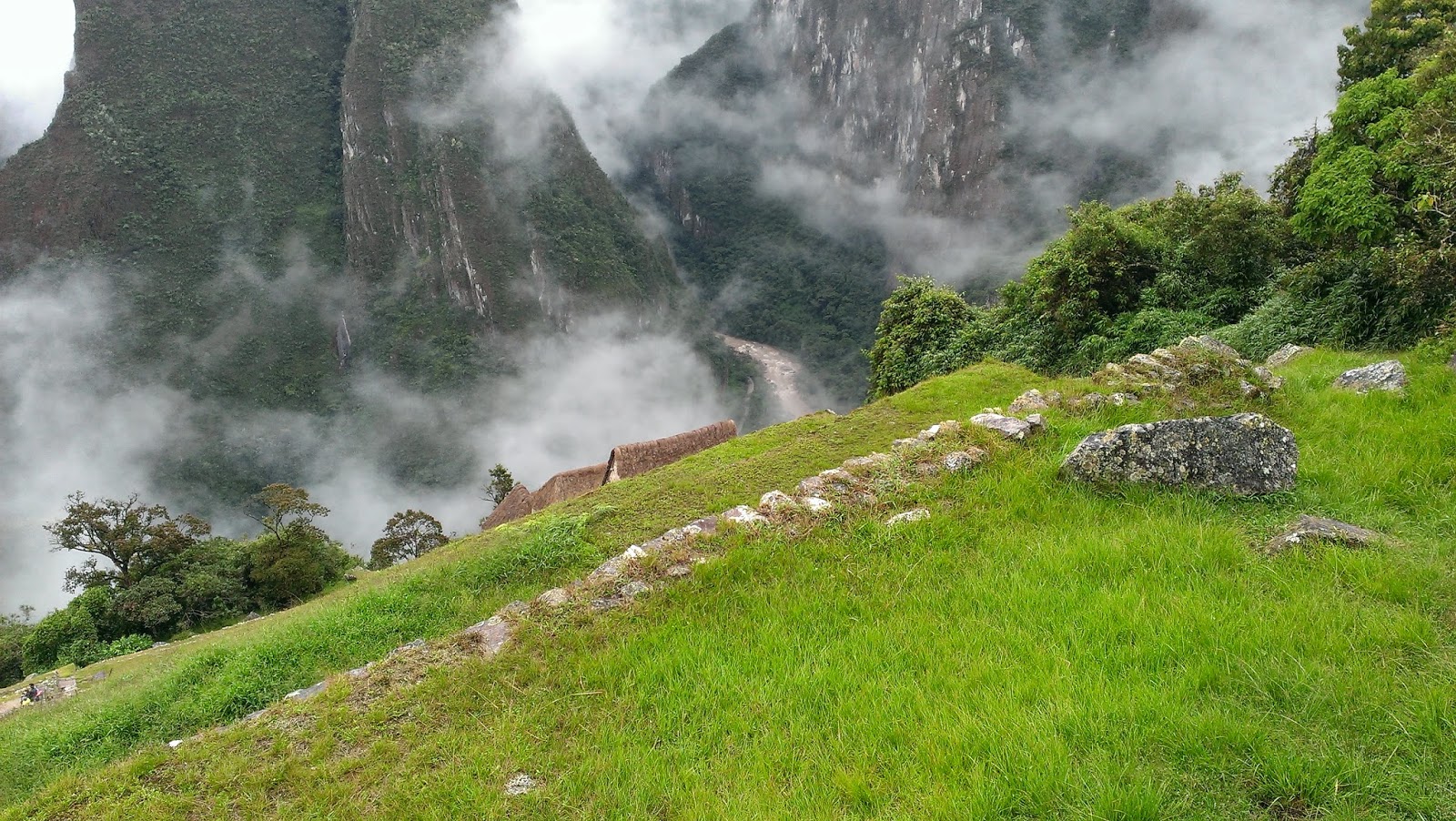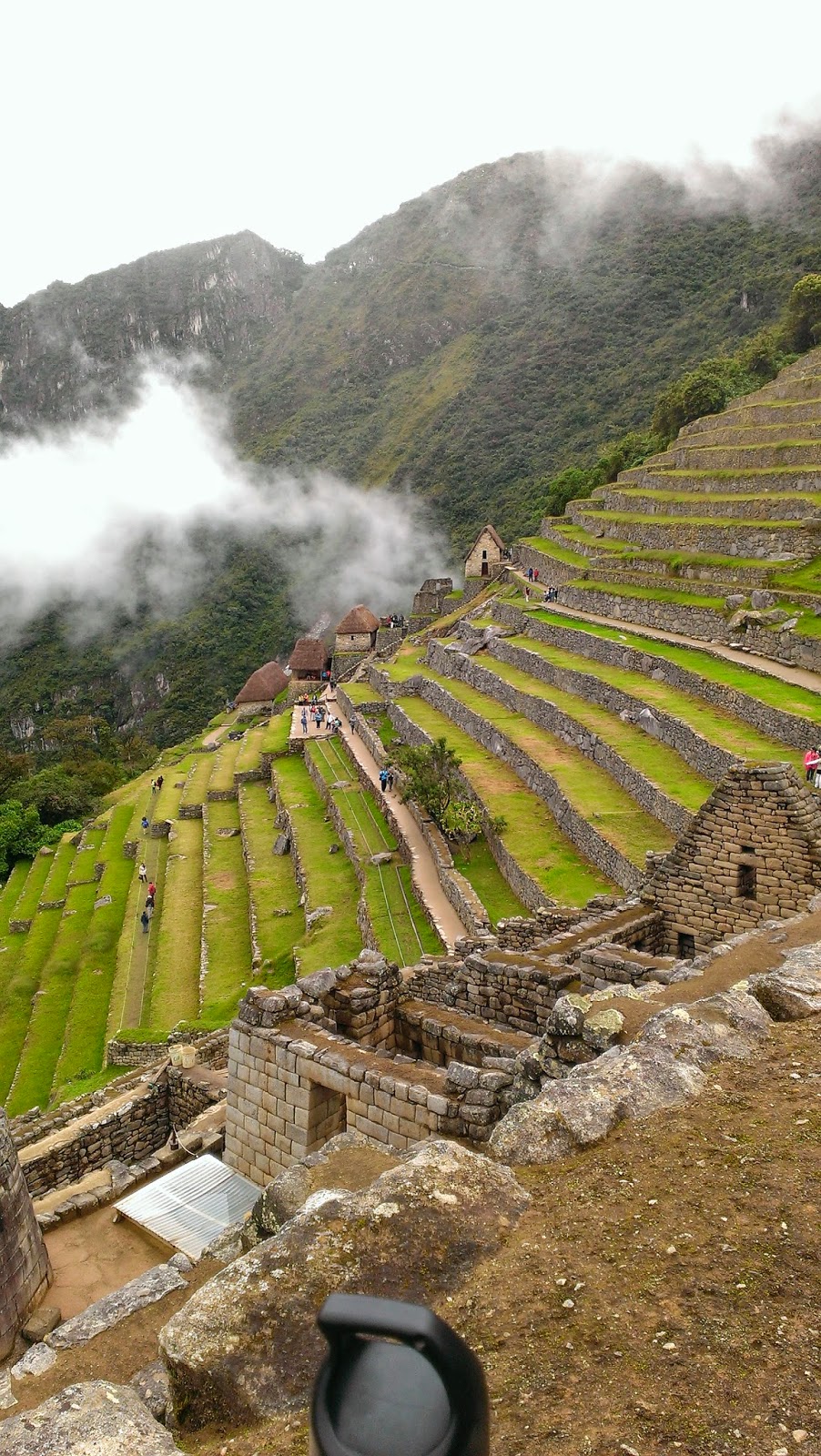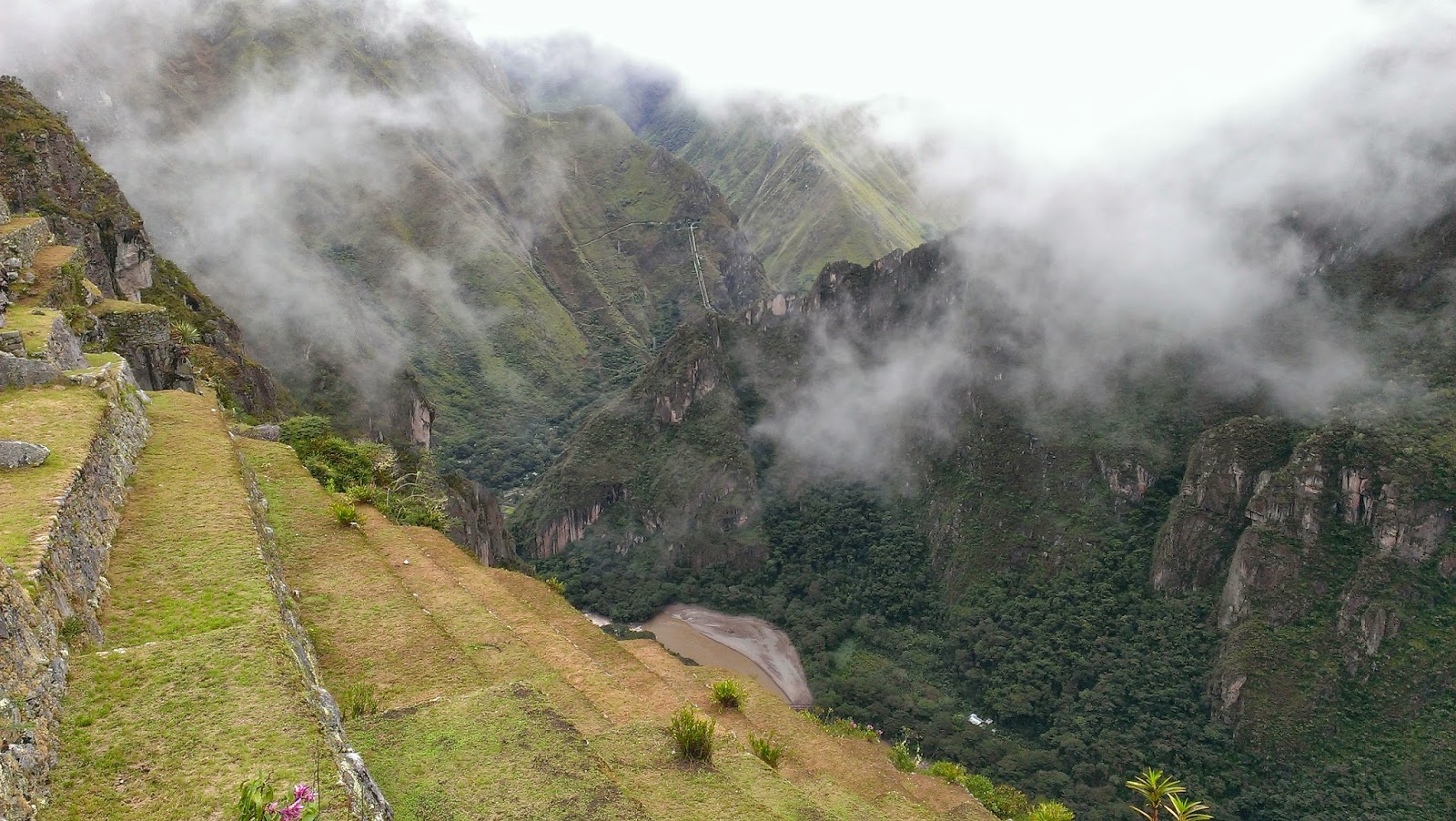The price we paid for having a nice room and stay at Villa
Urambamba was that we had to get up at 4:15 for a 4:45 breakfast and a 5:10
pickup.
It was a 30 minute ride in a 12
passenger van to the Ollantaytempo train station.
Perurail requires that you arrive 30 minutes
prior to your train departure, which we did.
We caught the 6:10 train to Aguas Caliente.
Our tour info indicated an option of riding
in a vista dome car for an extra $75.
We
did not choose that option, but all ten of us did ride in the vista dome car,
with windows in the roof.
The train follows
the Vilconata River and the cliffs are so steep that it is hard to see the top
of the cliffs even with the windows in the ceiling of our train car.
It was a very comfortable ride – plenty of
leg room.
They provided free
non-alcoholic drinks and muffins or cookies.
They also had Andean handcrafts for sale and a book on Peru for 50 PS –
I bought one and found it very helpful.
Had I read such materials before our trip, I would not have understood
it.
But seeing the things in the book
makes much of it more understandable.
Ninety minutes later we arrived in Aguas Caliente and were
met by our tour guide Richard. He made
arrangements for our bags to be taken to the Santaurio Hotel. So we only need to bring our jackets, cameras
and water bottles. There are only two
ways to get up to Machu Picchu – walk or take a bus. Our tour included the bus – it is a thirty
minute ride to the top. We spent the
next three plus hours exploring Machu Picchu (Old Mountain) and also looking at
Huayna Picchu (Young Mountain).
We learned about how the Incas deserted Machu Picchu and how
it was rediscovered by Yale archeologist Hiram Bingham in 1911 with a couple of
families of farmers living there.
It was a cloudy day, with the clouds and mist coming and going during our visit. It is difficult to put into words the size and scope of
Machu Picchu.
 |
| From the agricultural side looking at the residential area. |
 |
| Looking down on some of the terraces that were used for farming |
 |
| Looking across the valley |
 |
| The mist was coming and going, and it gave a surreal appearance at times |
 |
| This is where we entered into the residential section |
 |
| From the residential section looking back at the agricultural section |
There is an agricultural
sector and a residential sector.
There
are multiple temples.
There is a large
plaza with amazing acoustics – a leader could speak from the raised platform
and be heard by thousands of his subjects.
There were work areas, educational areas and places for
exploration.
There were shadow rocks
(rocks cut in the shape of important mountains).
These walls were different. Most were just one rock thick, but these had greater thickness with different rocks on each side.
 |
| There were many terraces used for growing crops |
Most of the other sites we visited, the Incas used quarries and brought rocks in. At Machu Picchu, they took the rocks that were there and used them. Here is a rock that was going to become a stairway, but was not completed. They had cut most of the stairs and had started smoothing them, but never moved them into place.
The current government keepers had put in a demonstration garden to give modern day visitors an idea of the plants that would have been present when the Incas were at Machu Picchu.
Among other plants, the demonstration garden even had coca plants growing there (if you look closely at the sign, you can see the name. While coca plants can be used to make cocaine, the leaves can also be used to make coca tea - most of us had it at several hotels and none of us got high.
There was a large plaza next to the residential section - the acoustics were excellent. Our guide clapped his hands so that you could hear across the plaza.
Shadow rocks were cut to mimic the outline of mountains that had significance for the Incans.
On the lower side of the residential area, there was an area where the Incans had workshops and which is sometime referred to as an educational area.
Patty and I joined five others and took the bus down – the
other three stayed a bit longer and then walked down – about 90 minutes of
stairs down the mountain. We met Julie and Joe as we were leaving (their train had broke down and they were delayed). When got to our hotel room, the towels were folded in the shape of elephants and flowers.
We had a lunch included in our tour.
At 2:00, we met at a “chifa” restaurant.
“Chifa” is a Peruvian adaptation of Chinese
food.
We had a pleasant buffet lunch and
then retired to our hotel.
Joe and Julie
joined us around 6:00 – they had signed on to our tour late and so they had
different hotels, trains and buses than we did.
Their train was supposed to be about an hour later than ours, but their
train broke down.
So they got to Machu
Picchu just as we were leaving.
Our
group was sitting in the lobby enjoying happy hour drinks, including “Machu
Picchus” – this is a layered drink with grenadine on the bottom, a middle layer
of mixed crème de menthe and pisco, and I forget what the top layer was.
I was in the group that stayed with Cusqueña
cerveza. No one wanted to go out for dinner and no one was overly hungry.
So we had the hotel desk order two pizzas for
us.
We sat around and enjoyed the time
with drinks and pizza and went to bed at a reasonable hour.
Our hotel was across the street from the Rio Vilcoñata – it
is a constant roar, even with the doors and windows closed. The nice part of this was that it was much
like a white noise machine which made for good sleeping – except for the
bed. While we had a bed that was wider
than a king size bed the night before at Villa Urambamba, the bed here at
Santaurio was narrower than a queen size bed.



























































No comments:
Post a Comment